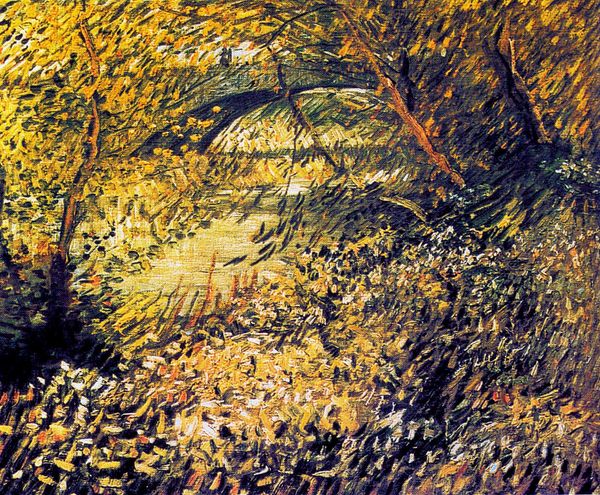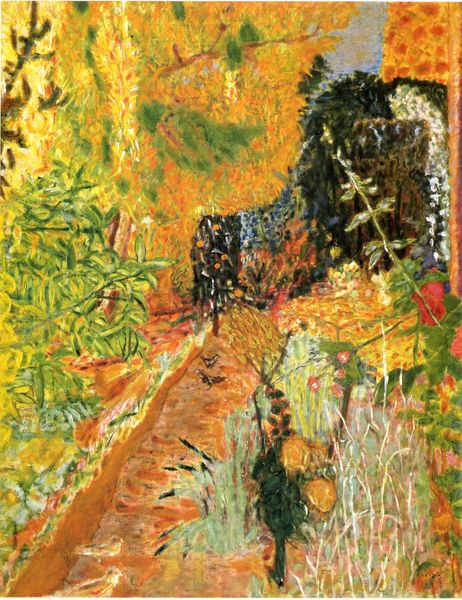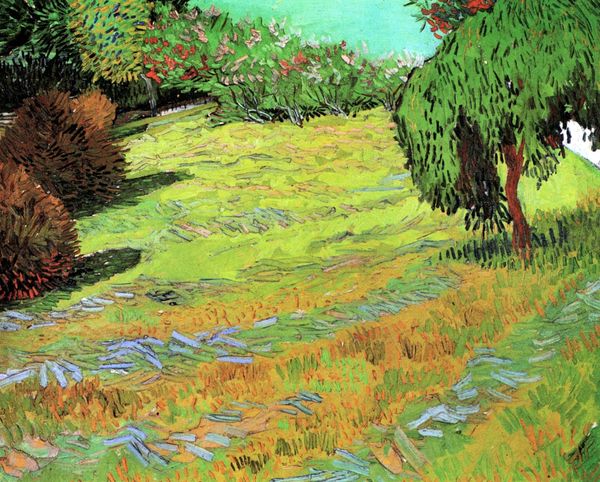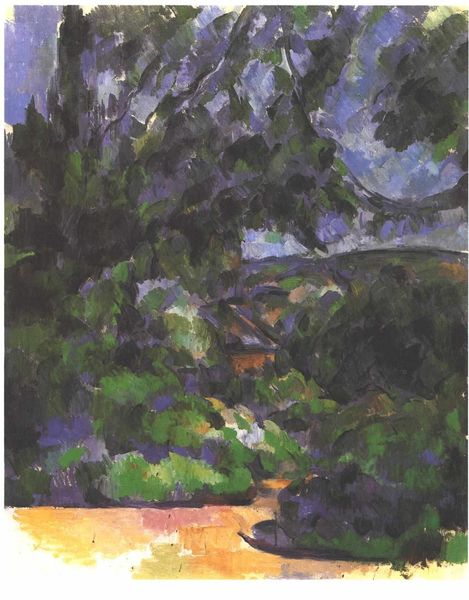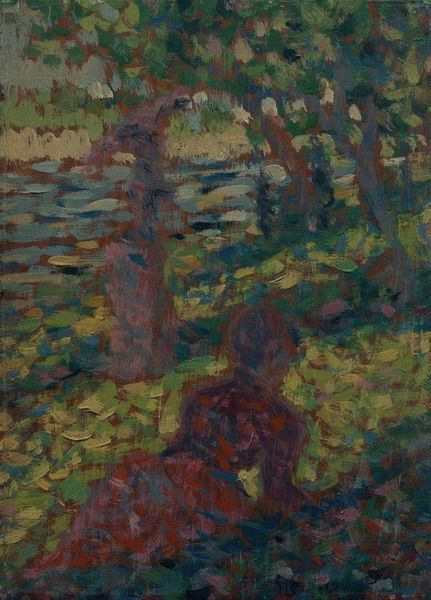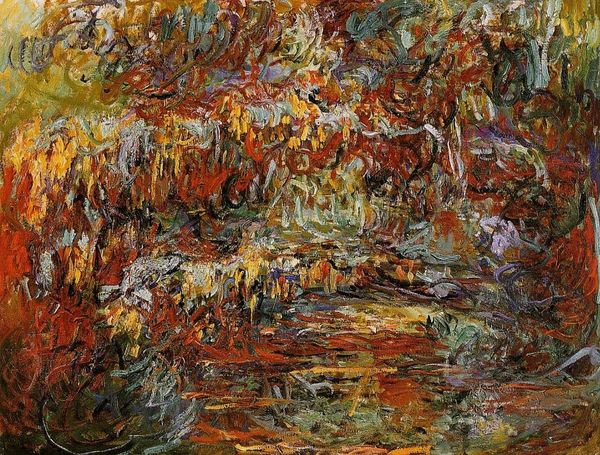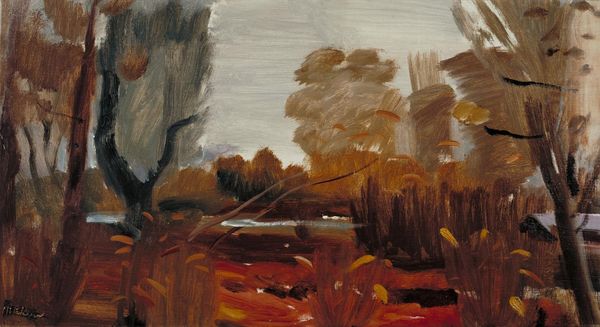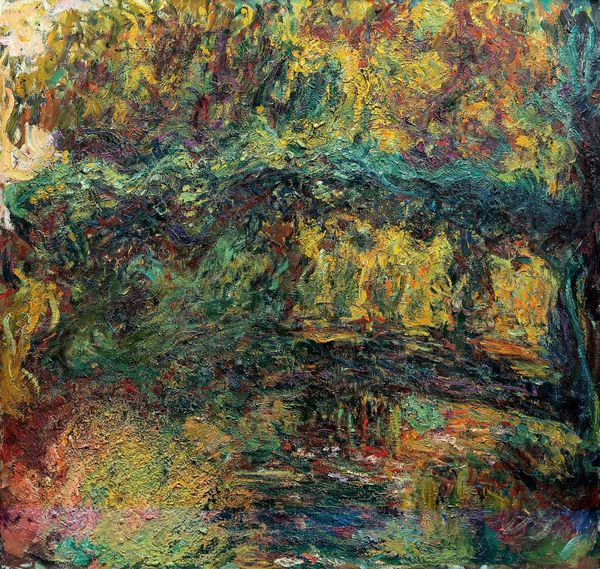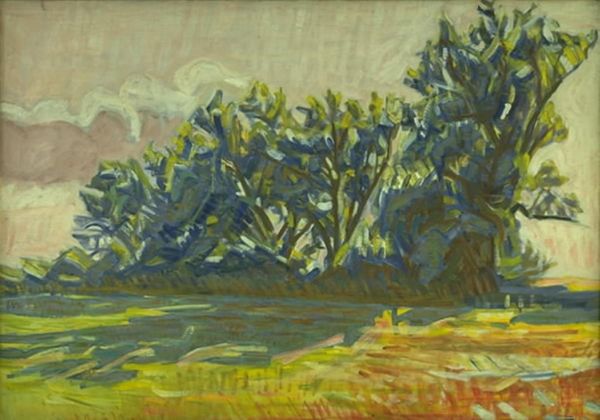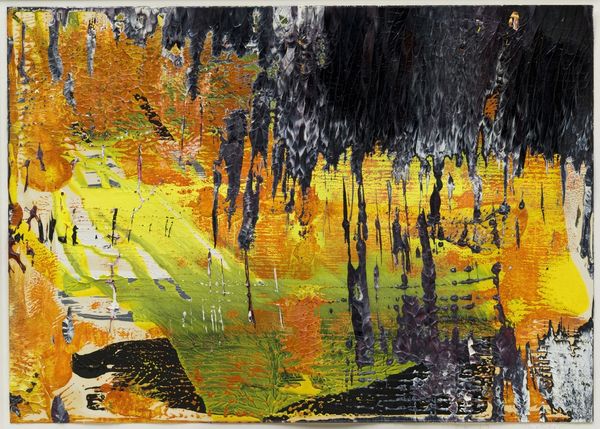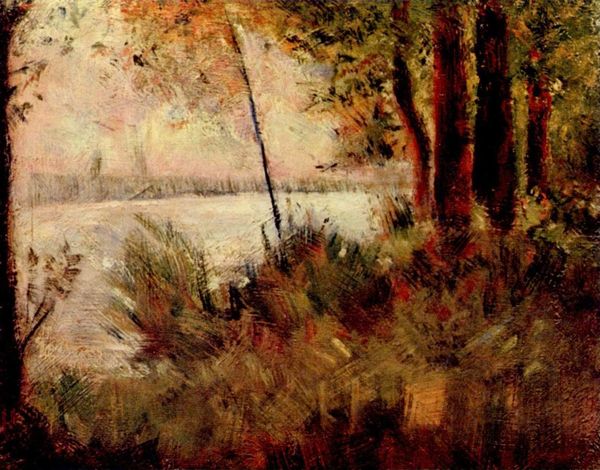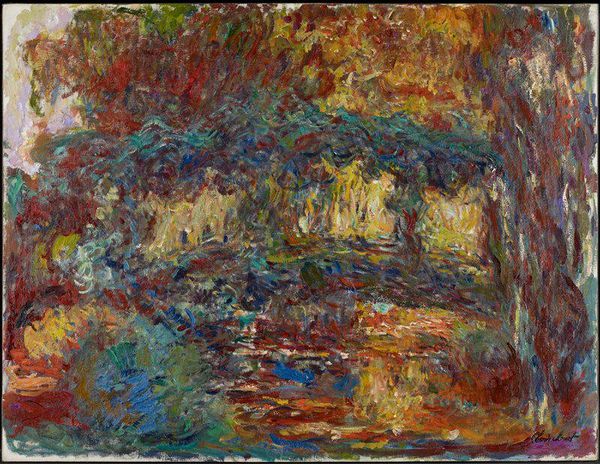
The Aven Stream 1889
0:00
0:00
charleslaval
Strasbourg Museum of Modern and Contemporary Art, Strasbourg, France
Copyright: Public domain
Curator: Let’s take a closer look at "The Aven Stream," an oil painting created by Charles Laval in 1889, found at the Strasbourg Museum of Modern and Contemporary Art. Editor: Immediately, I’m struck by how the texture, the visible impasto, gives the landscape such a vibrant, almost tactile quality. It feels raw, emotional. Curator: That raw emotion aligns with Post-Impressionism's emphasis on subjective vision, diverging from the optical focus of Impressionism. Laval's rendering isn't a precise depiction, but a filtered reality. Editor: Absolutely. The bold colors – the oranges and greens, even under what seems like an overcast sky – push against any literal interpretation. It speaks to a romantic idealization of nature, perhaps influenced by his time in Pont-Aven. How do you think its placement in Strasbourg impacts how visitors engage with it? Curator: Displaying this Breton landscape in Strasbourg opens it to dialogues about regionalism and national identity. Strasbourg, with its complex history between France and Germany, becomes a particularly potent location to consider these issues. Editor: That's insightful. I'm also interested in the symbolism, if any, of the stream itself. Water often represents change, the flow of time. Curator: Streams as narrative devices were pretty familiar; in terms of art history, they signified the dynamism and unstoppable qualities of nature, sometimes humanity. You can explore such streams in Romanticism, for example. Editor: But considering this through a contemporary lens, could that unyielding current be seen as an indictment against unchecked power? Curator: It would certainly be worth a discussion. Laval's style was evolving through various landscapes and portraits while absorbing various influences in Brittany at the time. Perhaps the stream then represented the rush of artistic creation. Editor: Maybe a bit of both? Whatever its inspiration, seeing this now invites reflection on our relationship with the natural world and the cultural forces shaping that view. Curator: Precisely. A landscape isn't merely scenery; it's an active record of historical processes and artistic choices. Editor: I’m leaving this piece with a deep need to understand Laval’s politics and his intentions by using paint so freely. It is much more intense after understanding it through a historic lens.
Comments
No comments
Be the first to comment and join the conversation on the ultimate creative platform.
